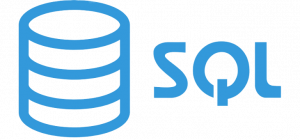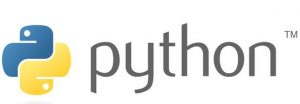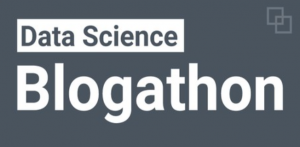Data Science has been the buzzword in the industry for quite some time now and I must say that it is the most thrilling and rewarding job role. Data Scientists not only enjoy a high salary scale but also get the opportunity to bring a direct business impact. For a data scientist, every day seems to be an adventure.
Today, the current market size for data science is $38 billion. The market size in 2025 is expected to reach $140 billion. This means we can expect this surge in demand for data scientists to continue abated for years!
According to Glassdoor, the average pay scale of a data scientist is Rs. 900k per year in India whereas the average salary of a computer programmer is Rs. 400k per year. You might guess where I’m going with this!

Data Science has applications across industries starting from consumer behavior analytics in Retail and E-commerce to computer vision applications such as detection and classification of objects and humans. In short, data science is ubiquitous right now and this space is going to be the most exciting one in the coming decade. We are still at the nascent stage of data and artificial intelligence.
In this article, I have listed down 8 crucial things you should know before embarking on your data science career. These 8 points, along with the entire machine learning lifecycle among other things, are comprehensively covered in the Certified AI & ML BlackBelt Plus Program – the flagship program that comes with a job guarantee!
Data Science seems really exciting but first, let us get our basics clear! What actually is data science? I’m not going to bore you with long lines of definition so here’s a short explanation:
Data Science is an amalgamation of Statistics, Computer Science, and specific domain knowledge.
Statistics and computer sciences are the generic fundamentals that can be perfected by studying and a little bit of practice. It is the domain knowledge that takes time, research, and effort to gain.
You don’t need to master each vertical but having a decent grip on all will help you in the long run.
Data Science is quite a big field in itself. It starts with simple data reporting activities to advanced predictive modeling using Artificial Intelligence. As you can observe by looking at the Data science spectrum below, the higher the complexity the higher its business value.
Data science is thrilling! Now, let’s look at the actual role of a data scientist.
Caution: These terms are losely used in the industry. The exact role can depend on the maturity of your organization in data initiatives.
The role of a data scientist is fairly expansive and will depend majorly on the type of project that you are working on. Here, we will discuss the general lifecycle of a data science project.
As I discussed in the earlier section, the role of a data scientist is relevant to all the fields and departments and so are its applications. In this section, I will be discussing a couple of problem statements that a data scientist works upon.
These are a few problem statements and can vary according to the data maturity of the organization.
Again, there are a lot of other roles under the data science umbrella such as data analyst, statistician, data analytics manager, MIS professional BI professional, etc. Make sure you do your due diligence before jumping into this space.
If you are not sure where to begin, check out this data science roadmap! Also as I mentioned earlier, you can learn all of this in comprehensive detail as part of the Certified AI & ML BlackBelt Plus Program.




Problem-Solving skills – The knowledge of statistics and computer science can be achieved by studying but it is the domain knowledge along with the problem-solving skills that will help you become a long shot. A majority of companies start their data science recruitment with problem-solving tests. You don’t need to be a master at it but a curious mind will help you in forming this skill.

Structured Thinking – The ability to structure your thoughts and map out each of them is certainly a must-have skill. Structured thinking is made of use in the initial steps of the project where the problem statement and hypothesis are to be formulated.

Storytelling Skills – A key skill that all data science and analytics professionals must have is the ability to express the data in a format that is understandable by the stakeholders – a story. It is this step that requires creativity and human skills.

Build your GitHub profile – Github is the place where you keep your projects. Other people can go through your project, add improvements, and so on. It is a great place to get recognized by critical people and network with them. Start your project and upload it to Github. This will help you in building a strong foundation.

Keep updating your resume – It is a natural tendency for humans to go towards perfectionism but it can be harmful. Instead of adding Python, machine learning, and SQL together in your resume with half-baked knowledge, it is advised to add skills one-by-one after perfecting it. For example, add Python when you are comfortable with it and only then move on to machine learning.

Participate in competitions – Data Science competitions are a sure shot way to improve your performance as a data scientist. Although it may take you a while to get adjusted, it will help you in the long run. You can go on the DataHack platform and pick a problem statement of your choice and get started. Recruiters love the candidates who have built their knowledge through practical applications.

Start writing articles – If you have a knack for data science and a passion for writing then what is a better way to express yourself than writing articles? Article writing helps you learn all the hard technical concepts and turn them into easy-to-grasp topics. Article writing is another great way to help you catch the eyes of potential recruiters.

Finally, let us delve into something you must keep in mind before starting your data science journey. Each and every one of us is unique and comes from different backgrounds. All the above points must be applied in a personalized manner to reap the maximum benefits.
For example, let’s say you are working in the IT sector for 5 years and you wish to move internally to the newly formed data science team. It turns out that the data science team majorly works on the NLP front. How will you go about it? You will need to craft your own personal goals.
The whole process might sound easy to implement in a linear fashion – learn Python -> machine learning -> deep learning and so on, but that’s not the case in a real-world scenario and you need that last piece of the puzzle to master data science – a mentor.
A mentor can customize your goals and your learning path and make sure that you earn the industry exposure that is relevant to you. And this is how Analytics Vidhya’s flagship course – Certified AI & ML BlackBelt Plus Program is crafted.
Certified AI & ML BlackBelt Plus Program consists of all the courses that you will require to master the art of data science – from basic Python, SQL, Excel to advance machine learning and deep learning techniques. What’s the best part? You will always be connected to your mentor. The mentor will devise a learning path according to your own goals and learning objectives.
Following this approach won’t just help you learn but become an industry-leading professional that is termed as the “Sexiest Job of the 21st century”.
Data Science is evolving a lightning speed and that’s what makes the role of a data scientist so exciting. In this article. we discussed some of the key points you must know before delving into this thrilling profession. I hope you’ll be much more insightful about the role after going through all the sections.
Start your journey by perfecting the basics and then begin to enter into advanced activities while building your profile simultaneously to be able to recognized by the potential recruiters. Make sure that you find the right mentor who will be able to guide you on the right path. If you want to become an industry-ready professional you can connect with mentors at Analytics Vidhya as part of the flagship course Certified AI & ML BlackBelt Plus Program.
Lorem ipsum dolor sit amet, consectetur adipiscing elit,
Amazing!! Crisp and to the point article.